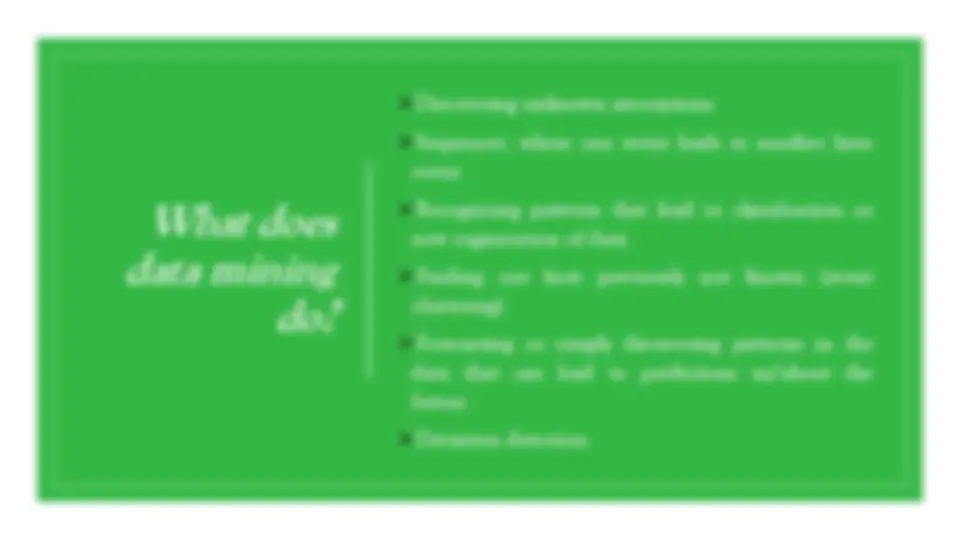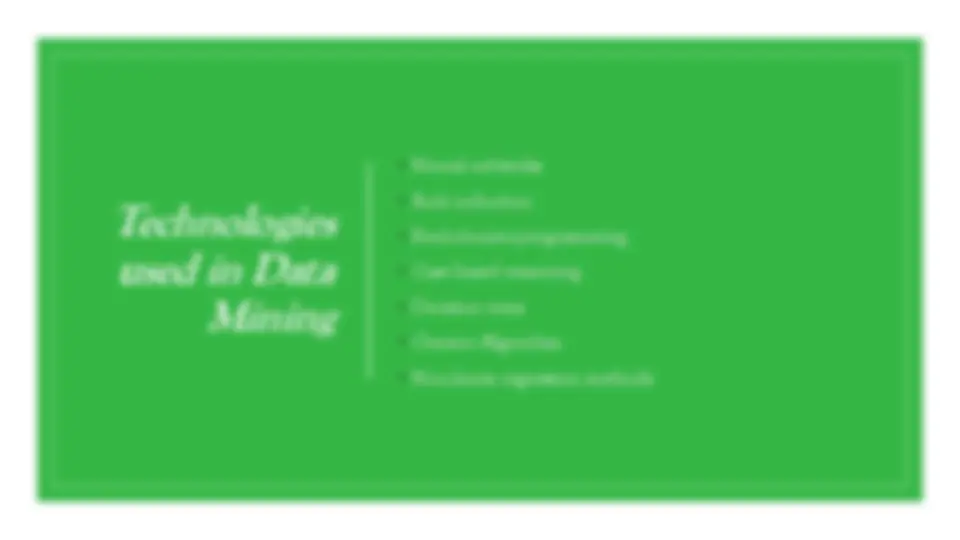





Study with the several resources on Docsity

Earn points by helping other students or get them with a premium plan


Prepare for your exams
Study with the several resources on Docsity

Earn points to download
Earn points by helping other students or get them with a premium plan
Community
Ask the community for help and clear up your study doubts
Discover the best universities in your country according to Docsity users
Free resources
Download our free guides on studying techniques, anxiety management strategies, and thesis advice from Docsity tutors
Data mining is an essential information analysis tool that involves the automated discovery of patterns and relationships in large datasets. This process, also known as knowledge discovery in databases (KDD), extracts implicit, previously unknown, and potentially useful information from data through various techniques such as clustering, data summarization, classification, dependency network analysis, and anomaly detection. Data mining applications include customer segmentation, trend analysis, financial statement analysis, loan application rating, vendor analysis, and problem employee identification. Technologies used in data mining include neural networks, rule induction, evolutionary programming, case-based reasoning, decision trees, generic algorithms, and non-linear regression methods.
What you will learn
Typology: Slides
1 / 6

This page cannot be seen from the preview
Don't miss anything!




◦ Data mining is an information analysis tool that involves the automated discovery of patterns and relationships in a data warehouse. ◦ Data mining also known as knowledge discovery databases (KDD), is the non trivial extraction of implicit, previously unknown and potentially useful information from the data. ◦ Data mining encompasses technical approaches such as clustering, data summarization, classification, finding dependency networks, analysing changes and detecting anomalies.
◦ Understanding the situation ◦ Developing suitable models ◦ Undertaking analysis based on suitable models. ◦ Initiating appropriate action ◦ Measuring the results ◦ Iterations
◦ Neural networks ◦ Rule induction ◦ Evolutionary programming ◦ Case based reasoning ◦ Decision trees ◦ Generic Algorithm ◦ Non-linear regression methods